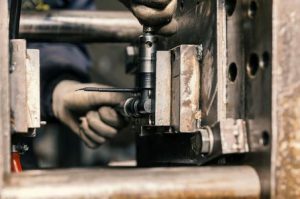 Are you thinking about using plastic injection molding to create parts for your company? If so, you’ll have the option of using either the insert molding process or the overmolding process to do it. Before you decide which one would be better, you should take the time to get a better understanding of how each one works. Read on to learn a little bit more about what makes insert molding and overmolding different.
Are you thinking about using plastic injection molding to create parts for your company? If so, you’ll have the option of using either the insert molding process or the overmolding process to do it. Before you decide which one would be better, you should take the time to get a better understanding of how each one works. Read on to learn a little bit more about what makes insert molding and overmolding different.
Insert molding
Insert molding takes plastic and injects it into a mold to produce a custom part. This process is often used to manufacture things like medical syringes, vacuum hose connectors, and more. It’s a very cost-effective way of creating parts and doesn’t take much time to carry out. It also cuts down on the weight of the parts that are made as well as their overall size.
Overmolding
Unlike insert molding, overmolding is a process that involves taking plastic and molding it on top of a preexisting material. The first material is taken and molded into the proper shape before the plastic is placed over top of it. This process is often used to manufacture things like phones, steering wheels, hand tools, and more. It results in a stronger finished product that lasts for a long time.
Which process is better for you?
When deciding between insert molding and overmolding, it really comes down to what kinds of parts you’re going to be creating. Both can be useful processes, but there are some parts that can only be produced using one process or the other.
Regardless of whether you want to take advantage of insert molding or overmolding, Bridgville Plastics can set you up with the right process for your needs. Call us at 269-465-6516 to discover more about how insert molding and overmolding work.
